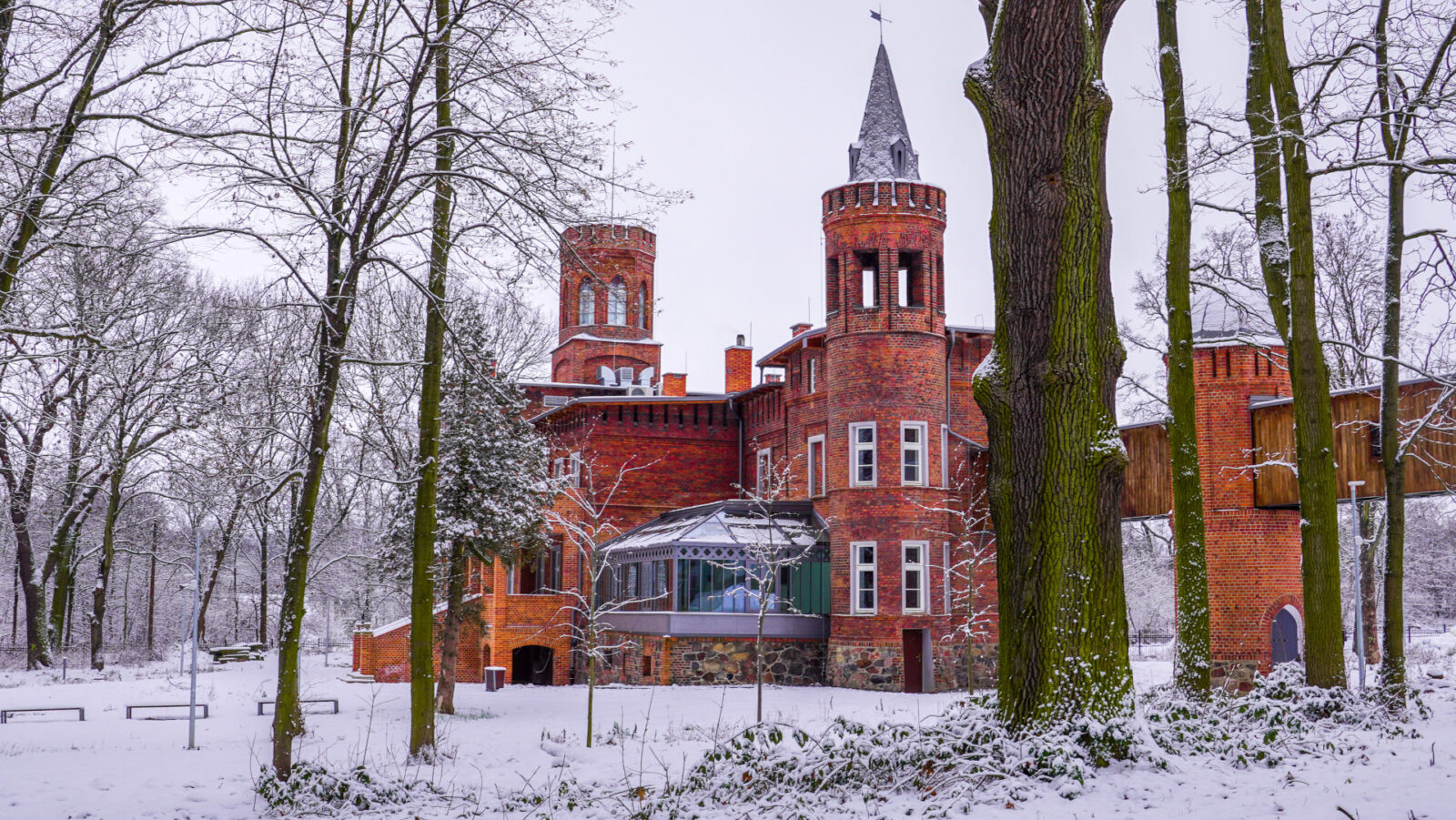
Białków Observatory
The Centre for Astronomical Education of the University of Wrocław in Białków was established in the revitalised 19th century estate of the amateur astronomer Leo Wutschichowsky (1854-1927). In 1881 Wutschichowsky bought the Belkawe estate (now Białków) and built there a family house and a private astronomical observatory.
The impressive red-brick neo-Gothic residential building of the Wutschichowsky family is characterised by two decorative towers with blanks and a spacious orangery. For the convenience of the owner, the bedroom was connected to the observatory by a roofed flyover more than 70 m long. The building is surrounded by a historic park with valuable specimens of trees.

The observatory consists of three observation pavilions. In the two small ones Wutschichowsky set up a 2.5-inch (6 cm) transit instrument and a so-called comet finder. In the third pavilion, covered by a rotating dome with a diameter of 6 metres, he installed an expensive 9-inch (24.5 cm) refractor- lenticular telescope, manufactured in 1883 by the Repsold&Sohne company in Hamburg. The telescope’s excellent lens was made by the Munich firm Reinfelder&Hertel.
The observatory was often visited by astronomers from the Königliche Universität zu Breslau, among others by Prof. Johann Gottfried Galle, the discoverer of the planet Neptune and the director of the Wrocław Astronomical Observatory in 1851-1897, and Julius Franz, the author of maps of the Moon’s surface, who in 1911 observed Quenisset’s comet in Białków. Leo Wutschichowsky died in 1927. Later on the then Schlesische Friedrich-Wilhelms-Universität zu Breslau bought the telescope and obtained the right to use the observatory building.

After the Second World War Professor Eugeniusz Rybka and his colleagues moved to Wrocław from Lvov. Thanks to him, the University of Wrocław received the Wutschichowskis’ house and the astronomical observatory, where astronomical observations were immediately undertaken.
The original Wutschichowsky telescope was dismantled only in 1976 and transferred to the Copernicus Museum in Frombork. After being restored a few years ago in the workshops of the Astronomical Institute of the University of Wrocław, it is being used again for demonstrations and observations. In Białków the University of Wrocław installed a new 60 cm reflector (mirror telescope) of the Cassegrain system, manufactured by Carl Zeiss Jena.

The Institute of Astronomy of the University of Wrocław uses the historic Leo Wutschichowsky astrophysical pavilion with the Cassegrain telescope and the new heliophysical pavilion, equipped with the 5O-centimetre Lyot coronagraph (it is the largest coronagraph in the world), the unique MSDP imaging spectrograph and a 15-centimetre horizontal telescope with a 30-centimetre Jensch coelostat.
Scientists from the University of Wrocław conduct observations and research on the Sun and variable stars here. The night-time observations in Białków are favoured by the low level of pollution of the night sky by diffuse artificial light, which in cities makes it impossible to conduct research.



